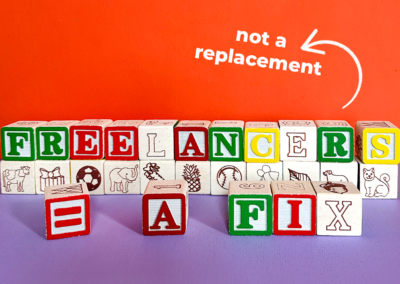People are researching, buying, and selling online more than ever before, making it possible for companies of all sizes to expand into international markets today.
But what does it take to successfully bring your brand across borders, into different countries and cultures? How can you build trust with consumers in our highly competitive and global online marketplace?
Good content marketing works because it speaks to prospective buyers in their language and recognizes their pain points in tangible ways. Yet, when selling globally, a one-size-fits-all content strategy will get you nowhere.
That’s why content localization, the process of adapting content for your target market, is a key part of any international marketing strategy. Content localization isn’t just about translating your content; there’s so much more that goes into creating a local and digital experience that resonates with customers in different parts of the world.
Here, we’ll cover all the basics you need to know about building your content localization strategy:
What is content localization?
Content localization is the process of creating content and marketing materials that reflect a specific region or country’s language preferences, cultural differences, terminologies, and so on.
In other words, you “localize” or create a piece of content that resonates with people in that specific region and is easy for them to understand. You can do this in a variety of ways, including:
- Translating key product pages, articles, support pages, legal content, and other documents into your target audiences’ languages
- Using local terminology, keywords, references, and currency in your content to boost SEO efforts in those regions
- Creating region-specific content such as city and country pages, local events, and personalized products for different countries
- Providing multilingual customer support, sales enablement materials, and local contact methods, which build trust and help prospects feel more comfortable interacting with and buying from your company
Why is content localization important for international growth?
As marketers, you’re aware of what matters to your customers and what drives them. When they see themselves and their needs reflected in your content, they’re more likely to trust your brand. And bridging that gap between your organization and an international clientele is a big win.
But building trust is just one of the many benefits of content localization. It can remove barriers, boost revenue, and support customer success and brand affinity.
For example, displaying pricing in local currencies or providing local payment methods may seem simple but can make a big difference by removing the need for your customers to do currency conversion math or worry about the foreign transaction fees.
And that’s where the sometimes-intricate nature of content localization comes into play.
Key content localization components
So, where and what types of content do you localize? This depends on your organization’s specific goals.
In a large organization planning a multi-national expansion, you’ll need a more holistic global marketing and product strategy. For instance, when Amazon expanded its Prime offerings in Southeast Asia in 2022, it didn’t just launch its US content there—it invested in local productions, and offered country-specific pricing and offers.
But SMBs looking to tap into new markets in neighboring countries may simply need to translate existing marketing materials and adapt product names and prices. Think about a service-based company in the northeast US looking to expand to southeastern Canada.
Here’s a list of key content components you might want to consider as you scope out your content localization plan:
Marketing and sales content
- Country-specific product pages with local terminology
- Blogs and articles
- Landing pages
- Pricing and checkout pages with local currency displayed and accepted for payment
- Visuals like graphics, infographics, and video
- Colors, symbols, imagery
- Product descriptions and documentation
- FAQs, support center, troubleshooting tips
- Tutorials and user manuals
- URLs
- Emails campaigns
- Sales enablement materials like brochures and sales decks
- Advertising
Brand and company content
- Website pages: Homepage, about, case studies, reviews
- Local and international certifications and badges
- Full local addresses
- GPS information (if possible, embed directions or map)
- Local phone numbers with appropriate calling codes
- Local email addresses
- Hours of operation in local format (if applicable)
- Multilingual global support teams
Legal content
- Terms and conditions
- Contracts
- Privacy policies
- Disclaimers
- Local regulations and requirements
- Other important and relevant policies
UX and system content, if applicable
- Adding a language selector or dropdown on your website
- Platform or dashboard UX (login buttons, navigation bars, CTA buttons, etc.)
- Form entries
- Number formats
How to translate and localize your content well: 6 steps for success
If content localization is on the agenda for your marketing strategy, then here’s some advice on how to get started and what to keep in mind.
1. Build your international content strategy
Understand what the process entails and how it can align with your business goals. In other words, think about the purpose of doing this for your company. This will help you build an international content strategy that actually works.
To build your strategy, explore:
- what countries you want to target
- what markets to research
- which languages you’ll translate into
- what parts of your marketing you will localize. For instance, only web content or sales enablement materials as well?
Jas Banwait Gill, growth manager at branded swag company SwagMagic puts this into perspective: “This global marketplace means your customers will differ in their language, values, currency, and product expectations. So the messaging that works well in one country may resonate poorly in another. And this is why brands must personalize the customer journey by serving up ads, content, and emails customized to resonate with users in a specific region. . . . The more you ‘geo-tailor’ the customer journey, the more you create a more personalized experience for people across the globe.”
Additionally, Liza Kirsh, chief marketing officer of packaging supplier Dymapak also recommends researching market trends. “Maybe your European audience prefers videos rather than images, or maybe Instagram is more popular than Facebook. The point is to put in the effort to learn the ins and outs of the culture you’re marketing to.”
2. Select target markets and languages
You can start localizing at different stages of growth and for a variety of reasons. Some marketers produce content for locations they’re not actively selling or operating in, but are planning to expand into in the future. Some want to build their presence and grow revenue in an existing but up-and-coming market.
As you decide on your target countries and regions, keep in mind the intricacies of translating into different languages. This is a good place for research as well.
For example, Markus Seebauer, localization strategist at Gateway Translations, shares, “In some languages like German, gendering can be tricky because of text expansion. And there are tricks to using a gender-neutral form for some words. AI translation like Google Translate and DeepL cannot do that. A good strategy for important content we have used in the past includes transcreation and testing different tones of voice to adjust the messaging to local markets.”
You may also want to consider dialects, especially for internationally spoken languages like Spanish and French. This isn’t to say that you should translate into every dialect but it will help you narrow down your list.
3. Decide what content to localize
Once you have your target locations and languages determined, think about how big you want to go. You have a few different options:
Translation only: Translations of top blog posts, product pages, company-related content, graphics, videos, links, etc.
Depending on your resources and what regions you’re expanding into, you may only need to translate some content. For instance, if you want to draw in more customers from only one or two countries, you can start small. Build out top-level pages in the select languages and see how your target audience responds. As traffic grows and leads come in, you can expand to include more localization efforts.
Translation and localization: This is typically the next step in a localization strategy where you expand beyond simply translating the content and consider more whole-sale adaptation, including replacing currency and measuring units, adding relevant outbound links, adapting product names, and more.
This can involve major branding changes, like French dairy company Danone using the more American-sounding “Dannon” name on its US product line. Another example is displaying region-relevant content to visitors from different countries, like Netflix does with movie and TV recommendations tailored for each region and language.
Internationalization: Making your entire website and content universally understandable and easily translatable. This includes backend and code adjustments to accommodate different languages and formats, or creating different subdomains or domain extensions for your website (for example, .fr for the French version of your website and .ca if targeting a Canadian audience).
If you do decide to make this a more extensive project with multiple languages and regions, you’ll want to make sure your branding works well internationally.
David Reid, sales director at plastic manufacterer VEM Tooling suggests that, “While adapting content, maintaining consistency in branding elements, such as logos, slogans, and critical messages, is essential. This helps to establish a recognizable and unified brand presence across different countries.”
It’s good to also consider localizing social media content, sales brochures and decks, customer case studies, product and data sheets, and other materials that support your brand identity. Based on your resources, you can take this a step further and hire employees in those areas and countries to represent your company. Then with local phone numbers and addresses, you can create a more local presence to support your global brand.
Depending on your business goals and resources, it can be best to start small, test, improve, see results, and then scale.
4. Design a content localization workflow
Once you’ve got the foundation set, it’s time to plan out exactly how this is going to go. You can work with freelancers or agencies specialized in localization, or, for smaller projects, you can leverage in-house native speakers. But it helps to get an idea of how the process should go.
Sara Bodner, Digital Content Manager at Conklin Media shares her advice for any marketers working with translators: “The best tip I have for marketing professionals … is for whoever wrote the content to directly communicate with the person translating. This cuts down on potential obstacles to efficiency and ensures that the writer can answer questions about meaning, style, and tone without having to jump through hoops.”
And as a writer, Kayla Voigt backs this up: “The more your translation team understands your brand voice and the type of writing you want to do, the more likely they’ll be able to make that happen in another language. You can also explain your cultural references so they can choose appropriate ones for their location.”
While it’s easy and tempting to use Google Translate for the project, your best bet is to have native speakers write or translate and review the work for the most accuracy. (If we haven’t convinced you, search “Google Translate fails” and you’ll get it!)
5. Hire expert talent and vendors
Certain parts of a localization project are easy to manage in-house. But for a larger scope of work, you’ll want to partner with translation and localization experts (which is something We Are Rosie can help with thanks to its community of 20k+ independent marketing specialists).
When vetting localization partners, ask whether the people working on your project:
- have translation certifications and qualifications
- can support multiple languages and/or dialects
- are native speakers
- have industry familiarity
You’ll also find a wide variety of translation management systems and localization tools such as self-translation software, language switcher plug-ins, and local SEO tools that can support the work.
6. Test and improve
Finally, test and see how your content performs with a small group before launching it more widely. If you have a diverse team, ask them to review the content and provide feedback. Alternatively, you may work with a market research or audience testing service to get feedback from a test group.
A case study: translating content with in-house native speakers
Having been part of the team at Global Call Forwarding, a cloud communication platform with a global audience, I’ve seen first-hand how a company can use insights and analytics to drive a localization project.
Over the years, our sales team realized that we get a lot of high-quality leads from South America. We already have Spanish-speaking sales and customer support reps, but we needed a different approach to draw more leads in.
“When you effectively create content in other languages, people that speak those languages are going to find your website,” says Luke Genoyer, our business development manager. “And they’ll eventually want to communicate with someone, whether for sales or customer support. For us, it was important to prioritize content localization for French and Spanish, because we already have team members who speak those languages and assist customers comfortably.”
We decided to create Spanish- and French-language versions of our top-level pages and product brochures. Our Latin American and French teammates (all native speakers) helped us out, and the process was quite simple: I wrote the pages in English and they translated them.
But before each translation project, we went over keywords, intent, and technical terms. A lot of our English product names were obviously not recognized in Spanish or French, so we identified alternatives that better resonated with the audience. We keep a record of which words and phrases to:
- Translate
- Transcreate (creative translation to make the text coherent and relevant)
- Transliterate (to spell in the characters of another alphabet)
- Keep in English
We found that having the writer and the translators work closely ensured our content was accurate, relevant, and optimized.
Start localizing!
To get the most out of your localization efforts, you’ll need to give time and space to the project.
This means, your team must:
- Find the right localization strategies for your business
- Adapt products (names, terminology, UX, currency) to meet local needs
- Implement local writing (e.g.: American vs British English) and SEO practices
- Identify cultural and language barriers
- Work with the right partners such as linguists, translators, and native speakers with marketing and industry expertise
- Provide local customer support, and more.
When you do this, you make your content accessible and relatable to an international audience. And this, in turn, brings your organization closer to prospective buyers, building awareness and trust.



